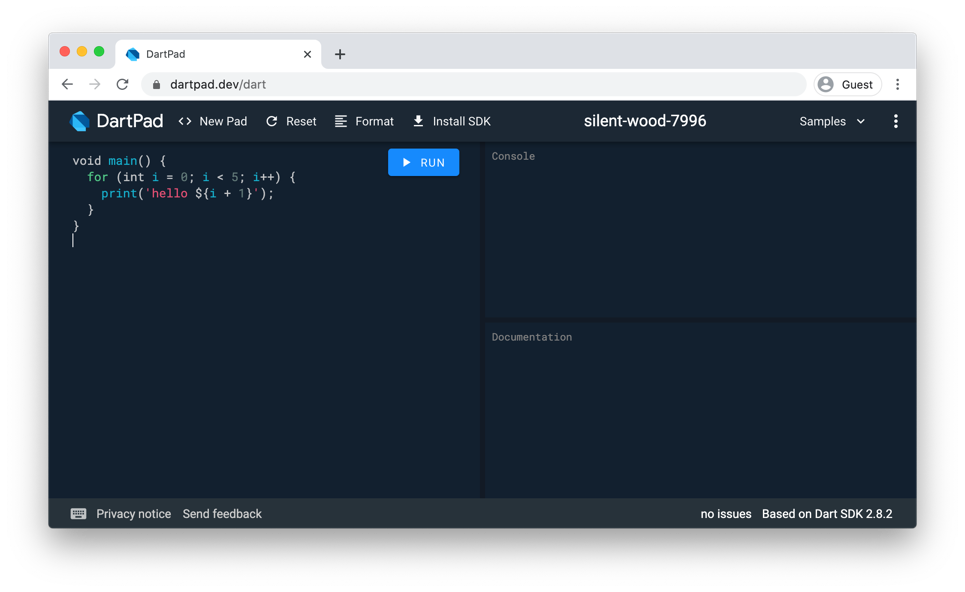DartPad
The tool that lets you interactively play with Dart in a browser.
DartPad is an open source tool that lets you play with the Dart language in any modern browser. Many pages in this site—especially tutorials, have embedded DartPads. To open DartPad as a standalone web page, visit the DartPad site (dartpad.dev).
Here's what DartPad looks like when configured to run Dart:

Library support
#
DartPad supports the dart:* core libraries marked
as multi-platform.
When writing Flutter apps, DartPad also supports
the package:flutter and dart:ui libraries.
DartPad doesn't support deferred loading or using packages from the pub.dev package repository besides the currently supported packages.
Getting started
#To get familiar with DartPad, try running some samples and creating a simple command-line app.
Open DartPad and run a sample
#-
Go to DartPad.
Dart code appears on the left, and a place for the output appears on the right.
-
Choose a Flutter sample such as Sunflower, using the Samples button in the top menu.
The rendered output appears to the right.
Create a command-line app
#To create a simple command-line app, start by creating a new snippet:
-
Click the New button, and confirm that you want to discard changes to the current pad.
Click the entry with the Dart logo.
-
Change the code. For example, change the
main()function to contain this code:dartfor (final char in 'hello'.split('')) { print(char); }As you type, DartPad shows hints, documentation, and autocomplete suggestions.
-
Click the Format button.
DartPad uses the Dart formatter to ensure that your code has proper indentation, white space, and line wrapping.
Run your app.
-
If you didn't happen to have any bugs while you were entering the code, try introducing a bug.
For example, if you change
splittospit, you get warnings at the bottom right of the window. If you run the app, a compilation error appears in the console.
Checking Dart version info
#The language features and APIs that DartPad supports depend on the Dart SDK version that DartPad is currently using. You can find this SDK version at the bottom right of DartPad.
Embedding DartPad in web pages
#You can embed DartPad inside of web pages, customizing it to suit your use case. For example, the futures tutorial contains multiple embedded DartPads labeled as examples and exercises.
For technical details on embedding DartPads, see the DartPad embedding guide.
Unless stated otherwise, the documentation on this site reflects Dart 3.10.3. Page last updated on 2025-9-4. View source or report an issue.